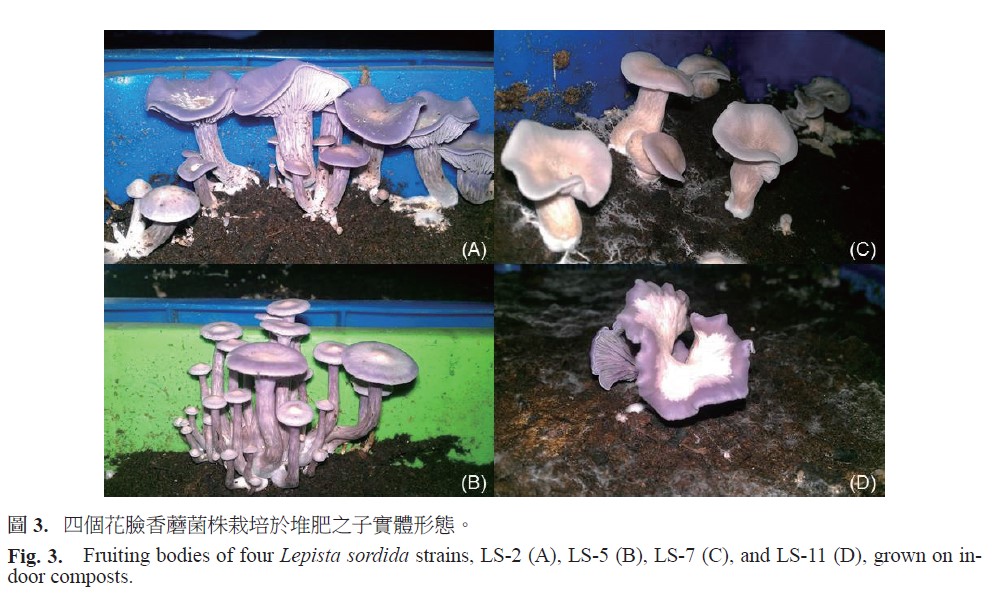All issues

Author:Wei-Sung Li, Yun-Sheng Lue, Tsung-Yen Wu, Shwu-Jene Tsai, and Mei-Hsing Chen*
Abstract:
Lepista sordida (Fr.) Singer is an important edible and medicinal mushroom. Due to its difficulty of cultivation, it has not been produced commercially. Four strains of L. sordida collected from central Taiwan were evaluated for their optimum mycelial growth temperature, and growth media, yield, biological efficiency and bioactive compounds of fruiting bodies. In relation to the growth temperature, results showed that 24-28℃ was the most suitable temperature range for mycelial growth of these four strains of L. sordida. Among the five media tested, mycelia of all the four strains grew fastest on compost extract medium, but the purple color of colony was darker on potato dextrose agar (PDA) and malt and yeast agar (MYA). Furthermore, these four stains were spawned in indoor compost and produced fruiting bodies successfully. Strain LS-5 fruited earliest, taking 22.5 d from casing to the 1st harvest, followed by LS-7 and LS-11 strains, taking 25.3 d and 73.0 d, respectively. Strain LS-2 was the most productive one with the highest yield of 2.6 kg pot-1 (with 15 kg compost) and a biological efficiency of 43%, while the yield of the strain LS-11 was the lowest with a biological efficiency of only 3.4%. In order to compare the bioactive compounds existed in the fruiting bodies of the four strains, the total contents of polysaccharides, phenols and anthocyanins were analyzed. Results showed that the contents of total polysaccharides in the strain LS-2, LS-5 and LS-7 were significantly higher than that of the strain LS-11. However, the total content of both phenols and anthocyanins in the strain LS-11 were higher than those of the other three strains (14.00 mg g-1 dry weight and 0.56 mg g-1 dry weight, respectively). Because the yield of the strain LS-2 has reached the level of commercial production and it contains a relative amount of bioactive compounds in its fruiting bodies, this mushroom strain would have the potential to be cultivated on a commercial scale and used as the source for the exploitation of functional supplements in the near future.
Key words:Lepista sordida, Compost, Domestication
Download:![]() PDF Links
PDF Links
- 1. Using Digital Soil Mapping to Predict Soil Organic Carbon Stocks in Zhuoshui River Basin
- 2. Taxonomic Review of the Genus Asiophrida Medvedev, 1999 in Taiwan (Insecta: Coleoptera: Chrysomelidae: Galerucinae: Alticini), with Notes on Biology
- 3. Development of a Technique for Forecasting (or Pre-Detection) Anthracnose Disease Incidences of Green Mature Bagging Mango Fruits
 Submit your manuscript
Submit your manuscript
 Guide for authors
Guide for authors